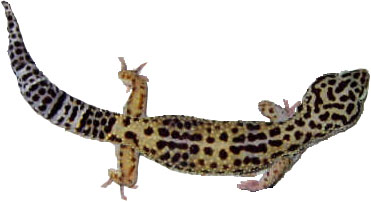Type the name of the breed you're looking for below
[wpdreams_ajaxsearchlite] Don't see the breed your're looking for? Click here and let us know!
Leopard Gecko
| Place of Origin and Range | The native habitat of the leopard gecko is the rocky, dry grassland and desert regions of south-Asian Afghanistan, Pakistan, north-west India, and some parts of Iran. |
| Description | Those found in the wild typically have a darker, dull, and drab colouration than those kept in captivity as pets. Those in captivity generally have an assortment of skin colours and patterns. The skin of a leopard gecko is very durable, which provides protection from the rough sand and rocky hills terrain of their dry environment. Their dorsal side is covered with small bumps, which gives a rough texture and appearance while their ventral side is thin, transparent, and smooth. Like all reptiles, leopard geckos shed their skin. In the few days before the shedding, the skin will turn colour to a translucent whitish grey. |
| Morph Patterns Available | Yes |
| Adult Size | Can grow up to 8 in ( 20 cm) |
| Accommodation | Most geckos prefer warm habitat with lots of shade and hides. High humidity and lots of branches for climbing. Provide a small water dish and mist twice daily. Cover the sides of the cage when possible to prevent injury to your gecko from running into glass. and include a warmed basking spot. Approx 80'F(27'C). |
| Lifespan | Can live 25 + years |
| Feeding / Diet | Mainly insects and prepared gecko diet. |
| Other Considerations | Healthy geckos with appropriate living conditions shed regularly. They shed completely and often eat their shed to the point where the keeper may not even notice that the gecko has shed. Some geckos experience shedding problems occasionally and others chronically have difficulty shedding. Signs of shedding difficulty range from large sheets of shed clinging to the head, tail or limbs to residual shed left around the eyes, on the tail tip or the toes. This shed must be removed since it can cause constrictive damage to the extremities. All geckos require calcium to maintain strong bones and vitamin D3 to aid in metabolizing the calcium. Calcium is generally supplied in powdered form in a bowl, through dusted feeders or as an ingredient in fruit. |



